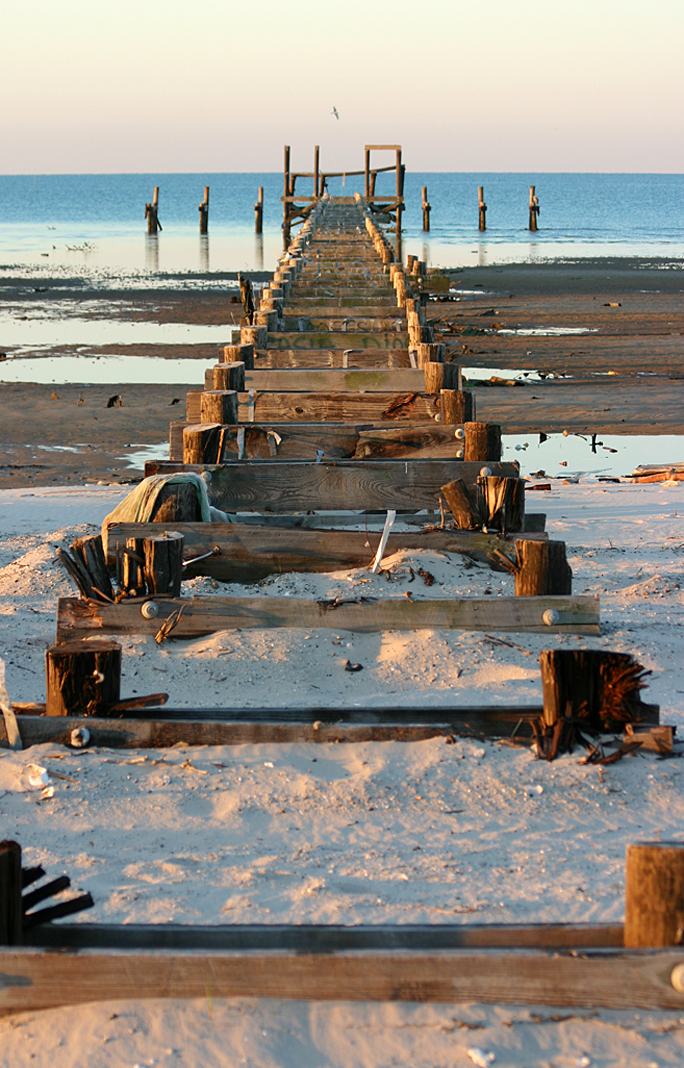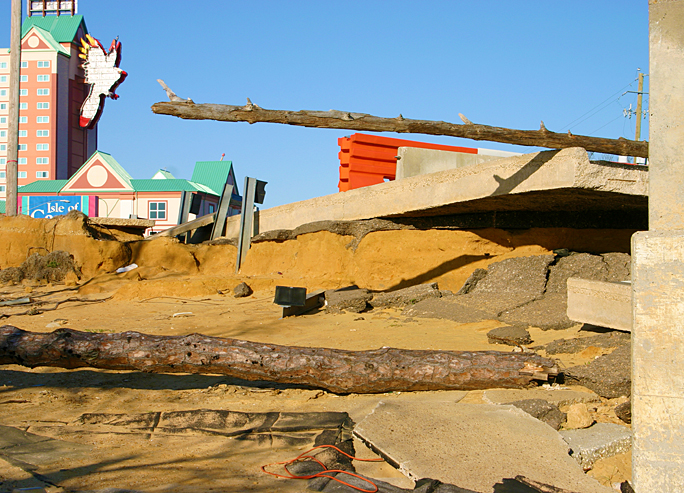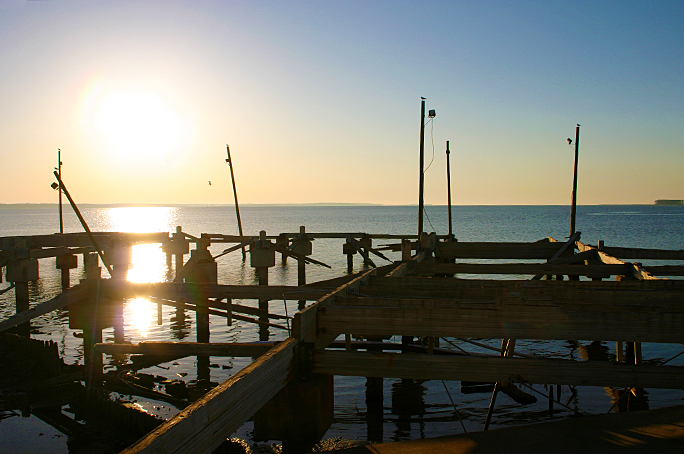T en years ago today, a storm — eventually to be named Katrina — was “born” over the southeastern Bahamas; and it grew to become one of the most memorable storms in recorded history during the eight days in which it existed, responsible for the deaths of 1,833 people and causing an estimated $108 billion in damage. At least 135 people are still considered missing.
Much of the damage occurred along the coast of the United States located north of the Gulf of Mexico — especially in Louisiana and Mississippi. I had the opportunity to view the aftermath of one of the five deadliest hurricanes and the costliest natural disaster ever to impact the United States when I drove south to the Mississippi Gulf Coast within two weeks after it was devastated — and I do not use that word lightly — by Hurricane Katrina.
While I was there assisting as a volunteer to help and clean up, I took hundreds of photographs which tell the story better than I ever could using words; and yet those photographs do not lend justice to the sheer destruction which forever changed the lives of many people — some of whom I know personally…
…and yet I was but only a mere microcosm of the extensive assistance and reporting which occurred there on the Mississippi Gulf Coast, where many of the roads finally re-opened just prior to my arrival, which is why I could not drive there any sooner: much of the Mississippi Gulf Coast remained inaccessible up until that point.
Speaking of point, one of the places which I photographed was the easternmost section of the city of Biloxi known as Point Cadet, which is the westernmost terminus of the old Biloxi Bay Bridge before Hurricane Katrina destroyed it.

Additional photographs of the bridge — which was the conduit of United States Highway 90 over Biloxi Bay — after Hurricane Katrina moved inland in 2005 are found in this article which I posted on Friday, August 29, 2014.

The remainder of the photographs for this article are of Point Cadet on an early and warm yet tranquil September morning in 2005; and I will let them tell you the story in their own “words” — starting with what is left of the dock in the above photograph as it juts out into Mississippi Sound at low tide.









Some people slept overnight in mobile homes and campers because they had nowhere else to sleep, as many buildings simply did not exist anymore.




I intend to post more photographs in future articles.
All photographs ©2005 by Brian Cohen.

